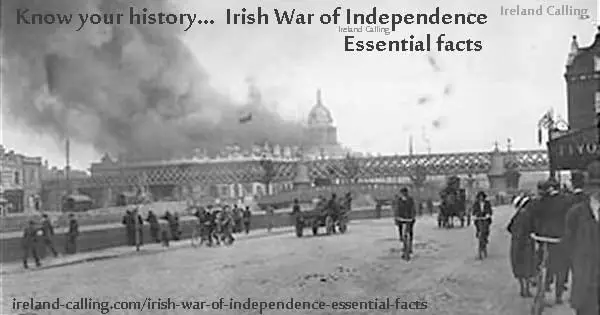war-of-independence-top.htmlThe Irish War of Independence took place between 1919 and 1921.
It was one of the most significant events in Irish history, and a major step towards it finally gaining status as an independent republic. Here are some of the essential facts of the War.
Following the executions of the Easter Rising leaders, the mood in Ireland was clearly in favour of independence from Britain.
Sínn Féin won 70% of the total Irish seats in the 1918 General Election, but were still in the minority in Ulster, where the Unionists were the majority.
Sínn Féin refused to take their seats in Westminster, and instead set up the Dáil in Dublin to govern Ireland from Ireland.
* * *
The war was started when a group of IRA members in Tipperary ambushed and killed two unarmed members of the Royal Irish Constabulary. Dan Breen, who took part in the attack, later explained: “The only way to start a war was to kill someone, and we wanted to start a war.”
* * *
Michael Collins adopted guerrilla tactics in the war against the wishes of his Sínn Féin colleagues Éamon de Valera and Arthur Griffiths. Collins ordered the IRA to target small groups of British troops in quick ambush attacks to prevent the British having time to respond.
* * *
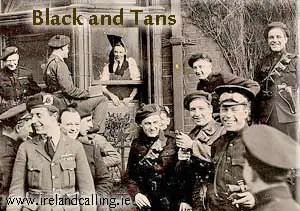
The British drafted in former World War I soldiers to help keep order in Ireland.
These were known as the Black and Tans because of their unmatching outfits of police and army uniforms.
The Black and Tans had a reputation of being drunken, brutal and indiscriminate in their acts of violence against the Irish.
* * *
Collins developed a large network of spies and informers within the British forces to find out where and when they were vulnerable and target the IRA attacks accordingly.
He also acquired a crew of ultra-assassins to execute high profile British officials and known British secret agents. This crew was known as the ‘squad’.
* * *
As they struggled to cope with the unexpected ambush attacks, the British recruited a team of former secret agents and spies to take down the IRA networks in Ireland.
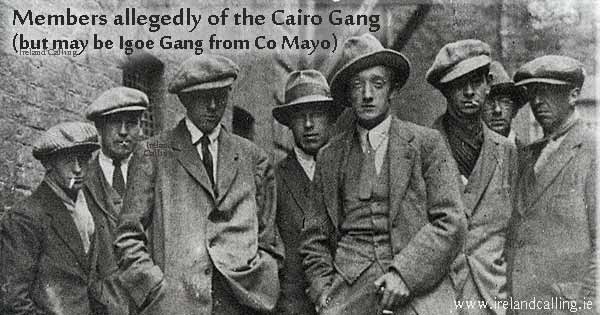
This group was known as the Cairo Gang because they regularly frequented the Cairo Café in Dublin.
In comparison to the violent and brutal Black and Tans, members of the Cairo Gang were intelligent and cunning and a major threat to Collins’ regime within the IRA.
* * *
Almost every successful attack or assassination carried out by the IRA was met with a retaliatory rampage from the Black and Tans.
They often raided cities in revenge for the murder of a British official, shooting indiscriminately through windows, looting buildings and starting fires.
They were even reported to have prevented firefighters putting out blazes by forcing them to retreat with gunfire.
* * *
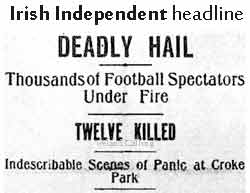
The most notable single event of the war was Bloody Sunday 21st November 1920.
The day began with the IRA setting out to several addresses in Dublin to assassinate members of the Cairo Gang. They succeeded in killing fourteen of them and one member of the Black and Tans.
Later that day, the RIC and Black and Tans opened fire on a crowd at a Gaelic football match at Croke Park, killing 14 members of the public, including a woman and a child, and injuring dozens more.
In the evening, three imprisoned IRA members were tortured and killed at Dublin Castle after allegedly trying to escape. The day became known as Bloody Sunday.
* * *
Following the events of Bloody Sunday, both sides went on the attack.
More than 1,000 people were killed between January 1921 and July 1921, about 70% of deaths in the whole three-year conflict. Horrific atrocities were carried out by both sides during this period.
* * *
By the summer of 1921 both sides wanted the war to end. Michael Collins was unsure how long the IRA could keep fighting against the might of the British Army.
The British government were embarrassed by the conduct of their troops in Ireland, most notably the Black and Tans, and were worried that would damage their reputation around the world. An uneasy truce was called in July 1921.
* * *
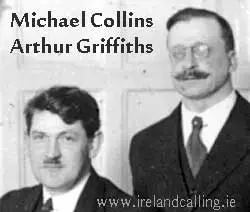
Michael Collins travelled with Arthur Griffiths to negotiate the Anglo-Irish Treaty towards the end of 1921.
Collins felt he lacked the political experience to negotiate effectively against the British Cabinet members, but Éamon de Valera insisted he go.
Collins signed the Treaty, which granted Ireland independence but as a dominion of the British Empire.
This was unacceptable to many members of the IRA and a Civil War broke out.
